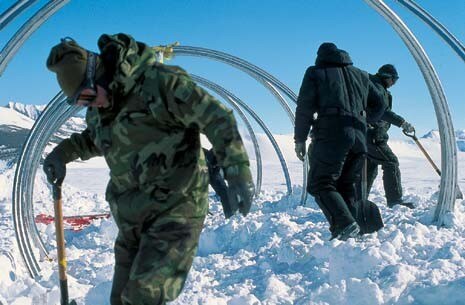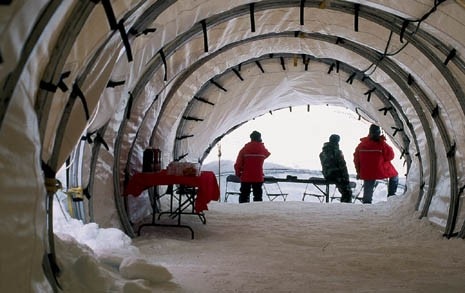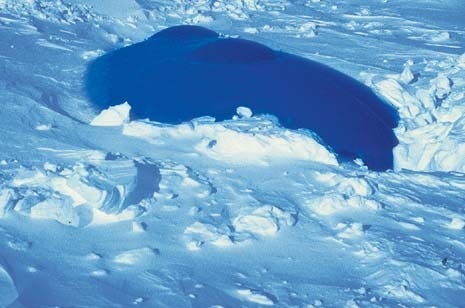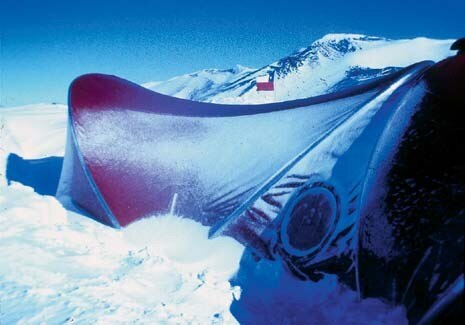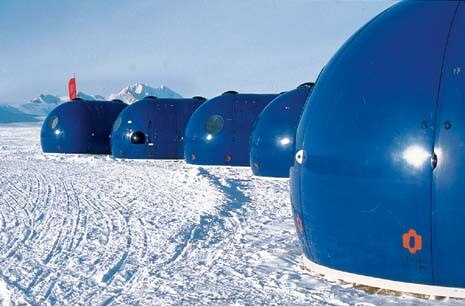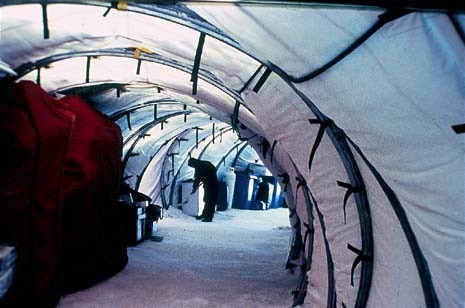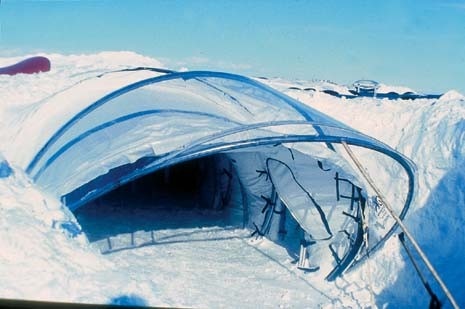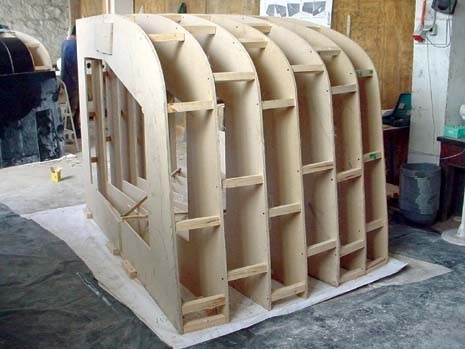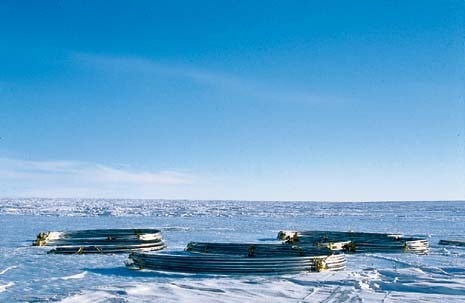Ice Station Chile
On November 19, 1999, two Hercules C-130 aircraft belonging to the Chilean Air Force landed at the foot of Patriot Hills (80° 12’ South latitude, 81° 22’ West longitude). The selected landing site was located within a thin strip next to a controversial area contested by Argentina and Great Britain known as the TACH (Territorio Antártico Chileno). Besides geopolitical reasons, the choice of Patriot Hills was the result of an accurate surveying campaign. Katabatic (gravity-driven) winds blow down from the mountains facing the site, sweeping snow away from the surface of the ice pack.
This unveils a vast expanse of corrugated ice where planes can land without the need of snow skis. The two planes unloaded onto the solidified ocean a group consisting of air force and army personnel, civil aviation officers and three professors from the Universidad Tecnica Federico Santa Maria in Valparaiso, Chile. The aim of their mission was to set up a station to test innovations in construction methods and new concepts in space division. The aircrafts’ holds contained caterpillar vehicles, motorised sleds and the unassembled pieces of a polar station: six fibreglass living modules from an Australian manufacturer and a structure to link them together made in Chile.
For 20 days, exposed to temperatures ranging from minus 15 to minus 30 degrees centigrade and in absence of night, the team assembled the first part of a base designed to be used one month during the polar summer. The inauguration of the EPTAP station (Estación Polar Teniente Arturo Parodi) took place on December 7, 1999. The success of EPTAP is thanks to a clever strategy of technological and constructive solutions that ingeniously took advantage of the project’s inherent limitations. The initial commission to the architects, who run a research unit called ARQZE (Arquitectura de Zonas Extremas) at Santa Maria University, was to design a connecting structure between single modules (produced for high altitudes and ski stations) which included two office units, one for shower and toilet purification and three dormitories. The project’s budget was $20,000, leaving no possibility for building prototypes.
The designers’ survival in adverse weather conditions would be proof of the solution’s suitability. As opposed to the building types used in Antarctica (typically consisting of prefab containers that contrast with local geographical and climatic conditions), EPTAP applies itself to the site by exploiting its particular characteristics. The living modules are hooked on to a U-shaped arch that has been digitally modelled to obtain a toroidal form which ensures rigidity and stability under pressure. The torus was made from a series of steel tubes, which were curved in order to easily fit into the fuselage of a C-130. A PVC membrane reinforced with a polyester mesh was affixed to the tubes. This system borrows from sailing technology and the way one assembles a camping tent.
Snap-fittings, stitchery, binding and lacing guarantee the economy and simplicity of its manufacturing and installation, which is carried out by untrained personnel. The temperature inside the protected walkway stays within a range of minus 15 to minus 5 degrees centigrade by recycling the warm air that escapes from the fibreglass capsules. The site’s morphological and meteorological conditions dictated all of the project’s choices. The installation of the base was carefully gauged for “superficial floating” upon the snow. The weight of the snow is used to fix the structure to the ground in the absence of foundations.
Its construction geometry allows it to be almost completely covered by snow without causing damage, while simultaneously increasing thermal insulation. The turbulence produced at the extremities of the torus, which is subjected to the wind’s force, results in less snow accumulation. These are the points where two folded sheets of polycarbonate meet to make up the enclosed walkway which offers visitors two panoramic views of the endless expanse of snow and ice outside. In the arctic summer of 2001, a second mission brought another lightweight structure to Patriot Hills and connected it to the first.
The successive building stages of EPTAP always coincided with maximum respect for the environment. All refuse (including biological waste) is taken back to Chile by plane and the base runs exclusively on solar and wind power. At the end of its useful life cycle, the base will be dismantled and shipped back to Chile. The second module, called Catabatic System, is made up of three parabolic surfaces positioned along three symmetrical axes, designed to be a canteen and the station’s field kitchen. The use of spatial formulations derived from tensile technology and geodesic forms gives a manageability and compactness to the elements making them easy to transport by air. The dismantled and folded Catabatic System only takes up two cubic metres and weighs 1,000 kilos. Experience gleaned from the first mission has allowed the refining of construction details and techniques. Extruding aluminium tubes with slots similar to sailing masts are fitted into the membrane cover. As before, it is made of PVC and polyester, but the different technical specifications increase its level of insulation. Instead of foundations, the structure is built on a rigid horizontal platform, which is achieved by spraying water on the site and waiting for it to freeze.
The ARQZE model demonstrates a design ingenuity that comes from belonging to a developing country. Advanced technological solutions have been re-dimensioned to the standards of local artisan production. Materials resistant to extreme conditions are implemented through inventing unusual combinations or altering original uses. Three-dimensional computer modelling substitutes expensive wind-tunnel experiments, and the context itself furnishes construction material in the form of snow. The toroidal arch in translucent white PVC, the blue fibreglass modules and the bright red parabolic canteen (the three colours of the Chilean flag) lend a new aesthetic to polar stations, lighter and more ethereal.
In November 2004, a hangar called Shockwave 300 and two fibreglass modules containing advanced sanitary facilities will be placed upon the blue ice of Patriot Hills. The hangar is made up of a succession of stereographic arches in galvanised aluminium laid out according to a geodesic pattern.

